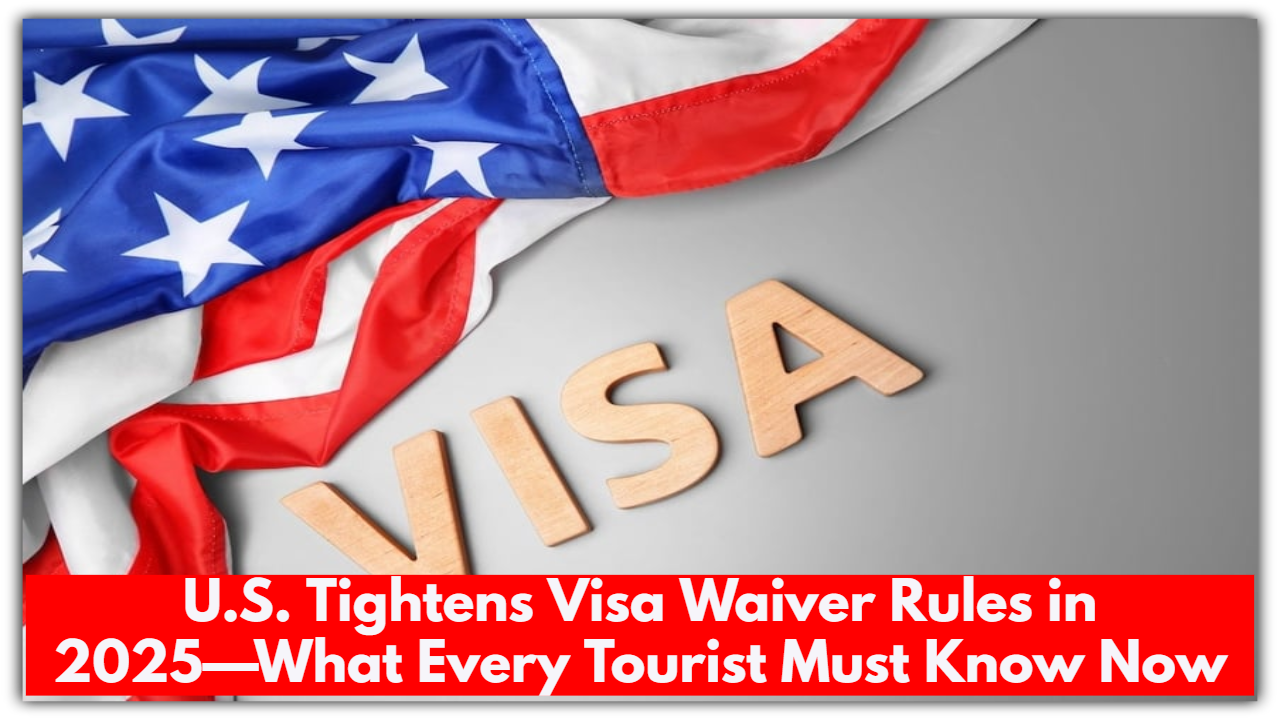U.S. Tightens Visa Waiver Rules in 2025—What Every Tourist Must Know Now
If you’re planning a trip to the U.S. in 2025 and hoping to avoid the hassle of applying for a visa, you’ve probably heard of the Visa Waiver Program (VWP). It sounds simple—visa-free entry for a quick trip—but the rules are getting tighter, and some things have changed this year that are worth paying attention to.
Let’s walk through what’s going on, and what you need to do to stay on the safe side.
What Is the Visa Waiver Program?
In short, the Visa Waiver Program lets citizens of certain countries visit the United States without getting a traditional visa. It’s designed for short visits—up to 90 days—for things like tourism, business meetings, or even just a layover on the way to another country.
But just because you don’t need a visa doesn’t mean you can just show up at the airport and board a plane. You still need to apply for ESTA—the Electronic System for Travel Authorization—before you go.
What’s New in 2025?
Some important updates have come up this year. If you’ve traveled to the U.S. before, things might feel a bit different now.
1. ESTA Is Still Required—and Under More Scrutiny
ESTA is your ticket in—it’s an online application that gives you the green light to travel under the VWP. It costs about $21 and is usually valid for two years or until your passport expires.
But in 2025, U.S. authorities have gotten a lot stricter about approving these. If you’ve been denied a U.S. visa in the past, or if you’ve traveled to certain countries like Iran or North Korea since 2011, your application might get rejected. Dual citizens of restricted countries may also be disqualified.
2. Romania’s Short-Lived Entry
Romania was added to the Visa Waiver Program at the start of 2025, making it the 43rd country on the list. But by May, the U.S. reversed that decision. If you’re Romanian, you’ll now need to go through the full visa process again.
3. Tighter Border Security
Even if your ESTA gets approved, getting past U.S. immigration isn’t guaranteed. Border officers are asking more detailed questions and sometimes even checking electronic devices. You’ll want to have a clear plan, proof of return travel, and be prepared to answer questions about your trip.

Who’s Eligible to Use the Program?
To qualify for the Visa Waiver Program, here’s what you need:
-
You must be a citizen of a participating country (there are 41 as of now)
-
You need a valid biometric (e-passport)
-
Your visit must be 90 days or less
-
You’re traveling for tourism, business, or in transit
-
You’ve been approved for ESTA in advance
-
You haven’t visited restricted countries or had a visa denied recently
If you’re unsure about your status, the safest bet is to check directly on the official U.S. ESTA website.
Who Doesn’t Qualify?
You can’t use the VWP if:
-
You’re from a country that’s not on the approved list (like India, China, or Nigeria)
-
You’ve overstayed in the U.S. before
-
You’ve had legal or immigration issues in the past
-
You’ve been to countries the U.S. considers high risk (even just visiting)
In those cases, you’ll need to apply for a regular visa through your local U.S. embassy.
Don’t Overstay—Seriously
Even staying just one extra day past the 90-day limit can cause major problems. You could lose your ability to use the program in the future, and it could even hurt your chances of getting a visa later on. Always know your dates and leave on time.
Before You Go: Quick Reminders
-
Apply for ESTA at least 72 hours before your flight
-
Have a return ticket or proof that you’re leaving the U.S.
-
Don’t bring anything that looks like you’re planning to stay long-term
-
Be honest with border officials—seriously, lying will only backfire
The Visa Waiver Program is still a great way to visit the U.S. without all the paperwork of a full visa—but it’s not as casual as it once was. With security tightened and the rules enforced more strictly, it’s more important than ever to be prepared.
Make sure you qualify, get your ESTA early, and travel with a clear plan. That way, you can focus on enjoying your trip—not worrying about border checks or paperwork issues.


Comments are closed, but trackbacks and pingbacks are open.